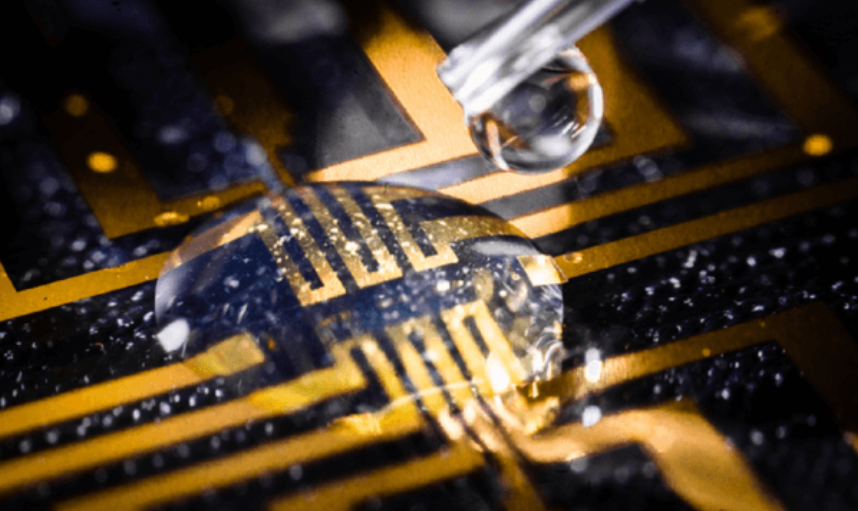 By Study Finds
By Study Finds
Activist Post Editor’s Note: Of course this type of technology can offer breakthroughs in health, but it shouldn’t take science fiction to predict where this can also go horribly wrong, not to mention potential military applications.
Electrical conductors, reminiscent of those in the “Terminator” films, which can guide brain activity, have been successfully grown inside the brains of fish and worms. This advancement could set the stage for innovative treatments for neurological conditions, including Alzheimer’s, according to researchers.
These minuscule electrodes are fabricated from an injectable, viscous gel enriched with enzymes that serve as “assembly molecules.” This technology was cultivated within the tissues of zebrafish and medicinal leeches.
“Contact with the body’s substances changes the structure of the gel and makes it electrically conductive, which it isn’t before injection,” says Dr. Xenofon Strakosas, the study’s lead author and a researcher at Lund University, in a media release. “Depending on the tissue, we can also adjust the composition of the gel to get the electrical process going.”
It’s noteworthy that the zebrafish, despite its simplicity, shares considerable genetic and cellular similarities with humans, even boasting a brain that operates similarly to ours. The transparency and size of this fish offer a unique insight into the workings of the organ.
The aforementioned breakthrough could be likened to a plot from the science fiction film, reminiscent of the Terminator cyborg portrayed by Arnold Schwarzenegger: a microprocessor-controlled robot, armored yet covered in human flesh, skin, hair, and blood.
The electrodes were nurtured within living tissues, with the body’s molecules acting as catalysts. This accomplishment marks a significant leap toward crafting fully integrated electronic circuits within organisms, potentially including humans.
“For several decades, we have tried to create electronics that mimic biology. Now we let biology create the electronics for us,” says Professor Magnus Berggren from Linkoping University, a co-author of the study.
Activist Post is Google-Free — We Need Your Support
Contribute Just $1 Per Month at Patreon or SubscribeStar
Merging electronics with tissue can provide deeper insights into intricate biological functions. This union promises to further develop man-machine interfaces to address brain-related diseases. Traditional bioelectronics in the semiconductor sector possess a rigid design, making them nearly incompatible with dynamic biological signaling systems. However, the device might bridge this gap.
The body’s molecules have the ability to modify the gel, making it electrically conductive, a property it didn’t have before being injected. The gel’s composition can be adjusted based on the specific tissue to initiate electrical activity.
Remarkably, just the body’s inherent molecules are required to catalyze electrode formation, eliminating the need for genetic modifications or external stimuli like light or electrical energy, which were prerequisites in earlier experiments.
This pioneering discovery heralds a paradigm shift in bioelectronics. Previously, initiating electronic processes within the body demanded the implantation of physical objects. In the future, a simple gel injection might suffice, with the potential to specifically target nerves, paving the way for the creation of fully-integrated electronic circuits within humans.
In trials, electrodes were formed in the brain, heart, and tail fins of zebrafish and around the nervous tissue of medicinal leeches. Importantly, the animals weren’t adversely affected by the gel injection and remained otherwise unchanged. A significant challenge faced was accounting for the immune system.
“By making smart changes to the chemistry, we were able to develop electrodes that were accepted by the brain tissue and immune system. The zebrafish is an excellent model for the study of organic electrodes in brains,” adds Professor Roger Olsson of Lund University.
A salient difference between plants and animals lies in their cell structures. While plant cells have rigid walls conducive to electrode formation, animal cells resemble a soft mass. Crafting a gel, structured adequately with the right substance mix to form electrodes within such an environment, was a long-standing challenge.
“Our results open up for completely new ways of thinking about biology and electronics. We still have a range of problems to solve, but this study is a good starting point for future research,” concludes Hanne Biesmans, a co-lead author and Ph.D. candidate at Lund.
The study is published in the journal Science.
South West News Service writer Ellie Forbes contributed to this report.
Source: Study Finds
View StudyFinds’s article archive
Top image: The injectable gel being tested on a microfabricated circuit. (credit: Thor Balkhed)
Become a Patron!
Or support us at SubscribeStar
Donate cryptocurrency HERE
Subscribe to Activist Post for truth, peace, and freedom news. Follow us on SoMee, Telegram, HIVE, Flote, Minds, MeWe, Twitter, Gab, and What Really Happened.
Provide, Protect and Profit from what’s coming! Get a free issue of Counter Markets today.

Be the first to comment on "Terminator-inspired Electrodes Grown in Living Brains Pave Way for Neurological Disorder Treatments"